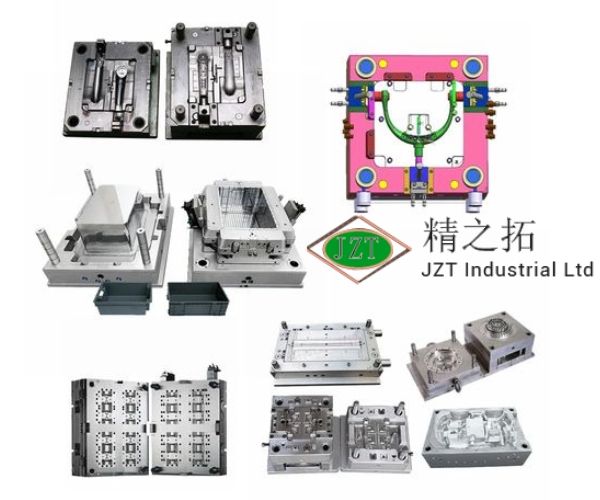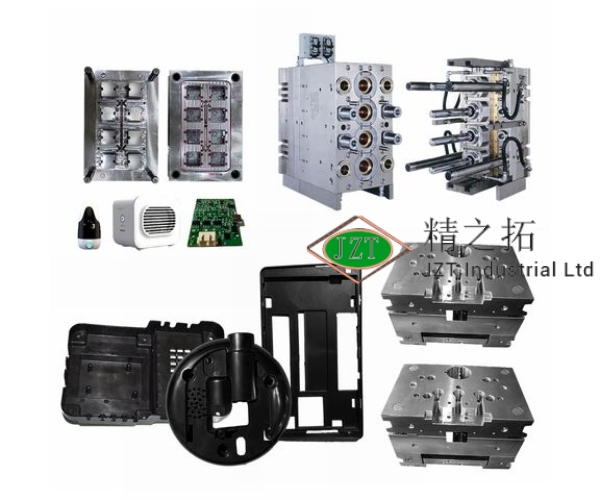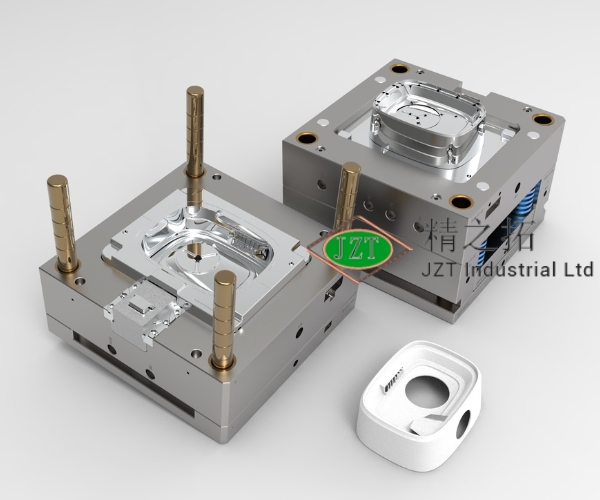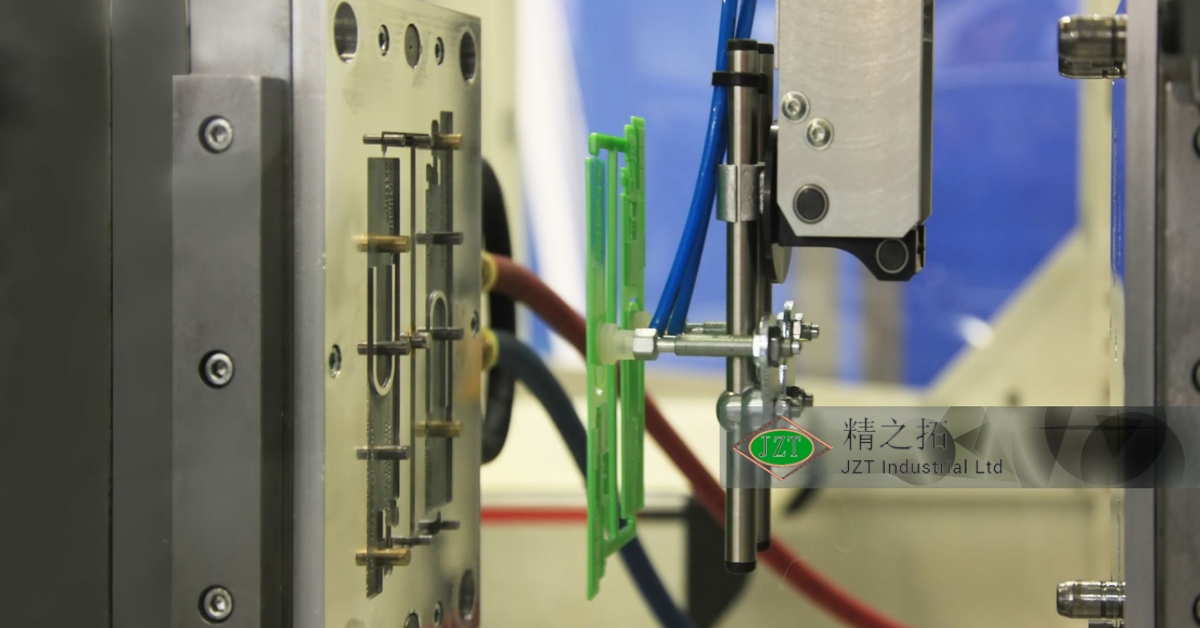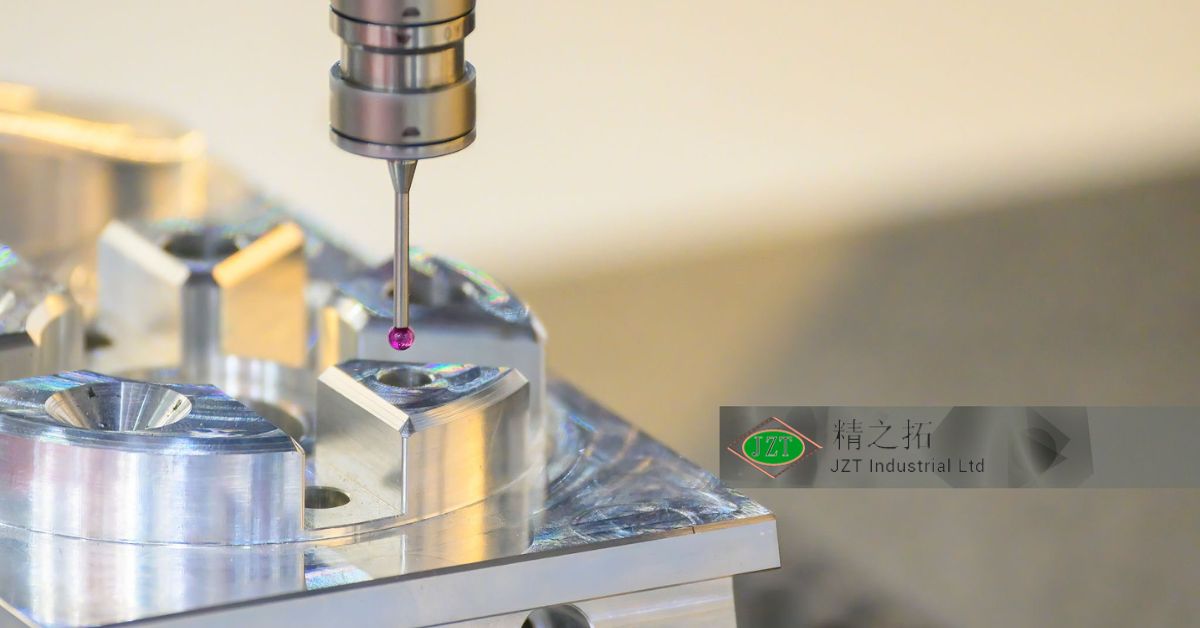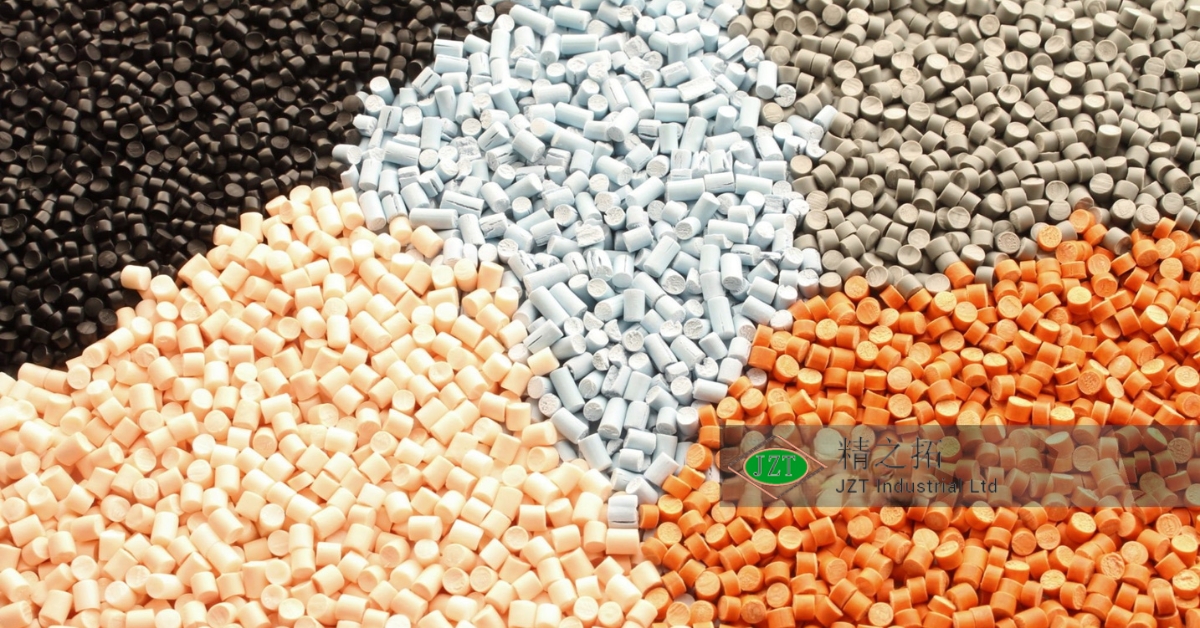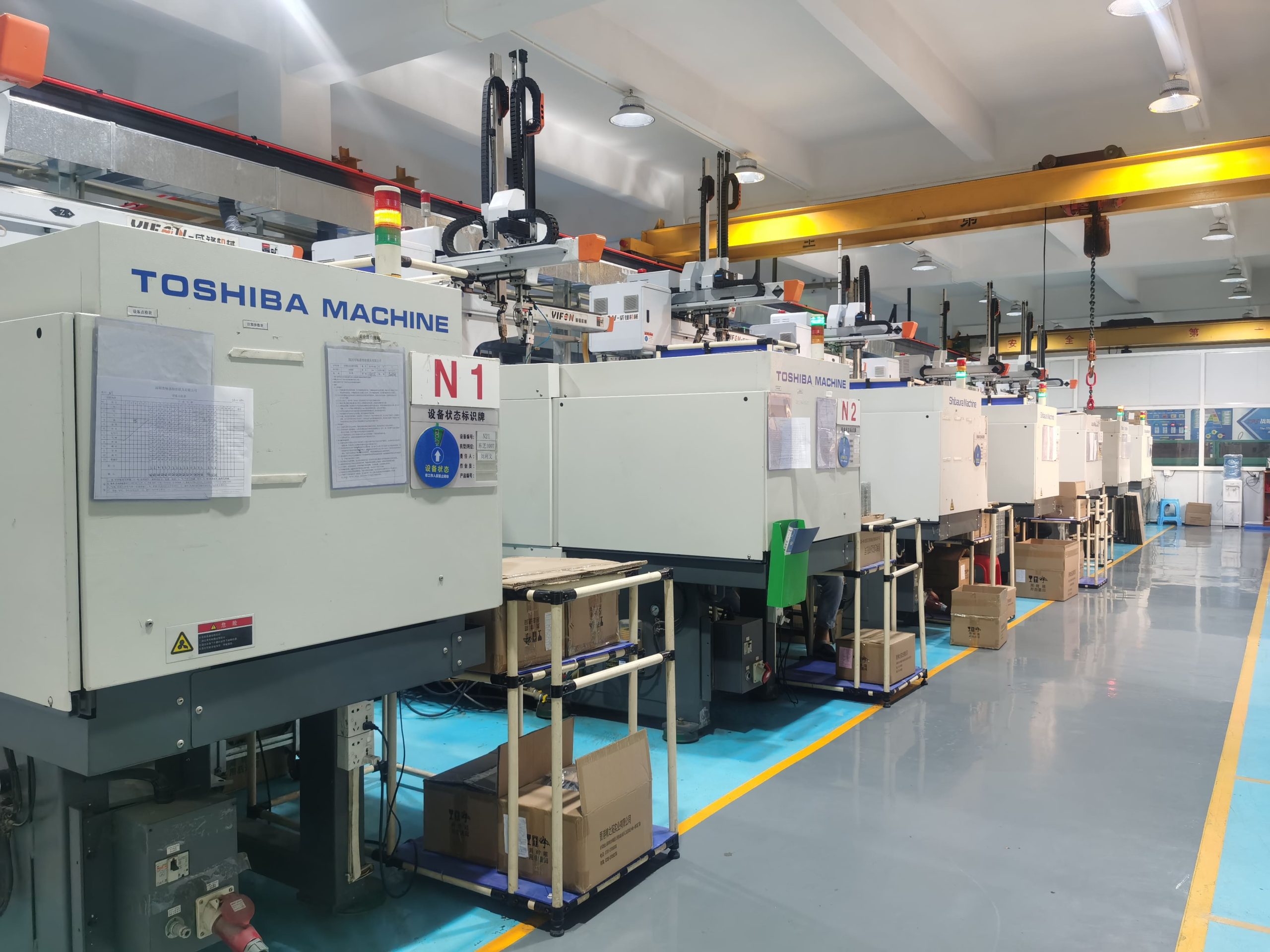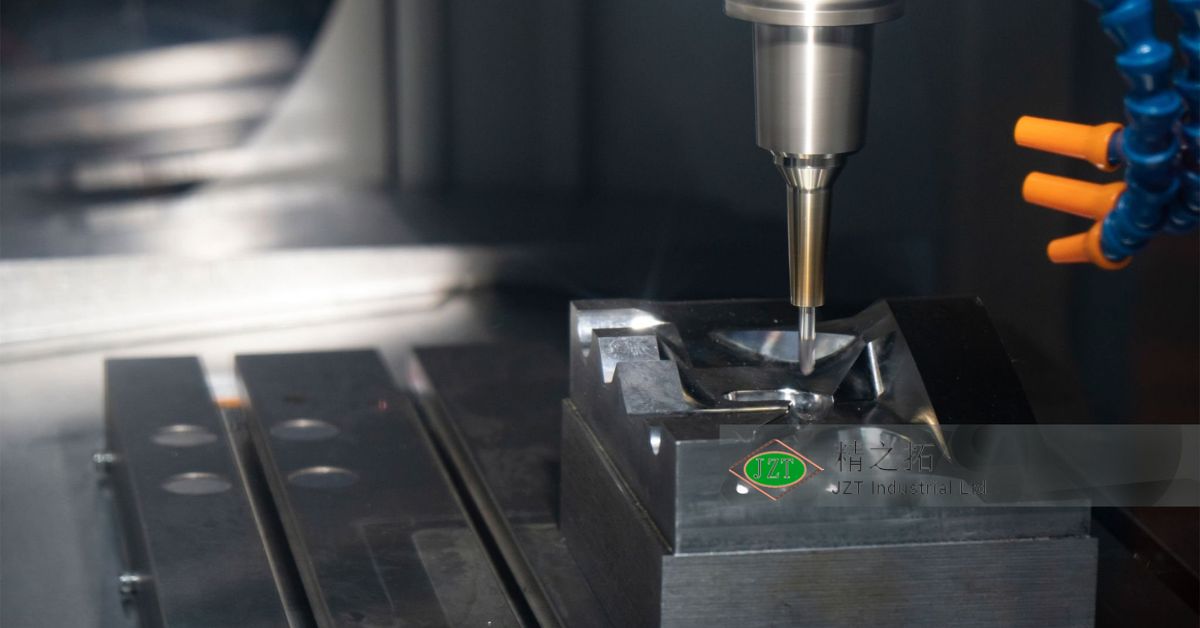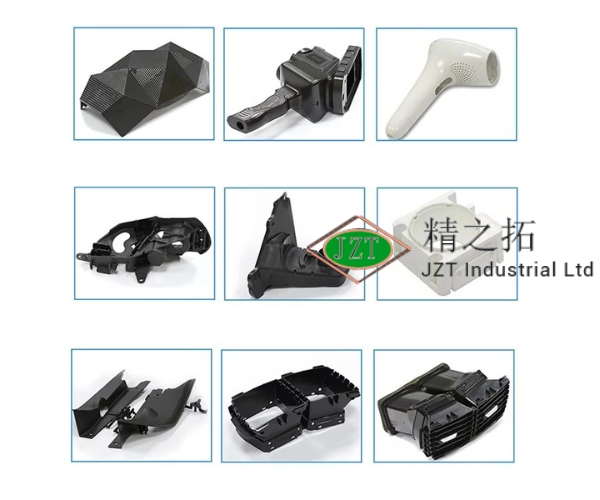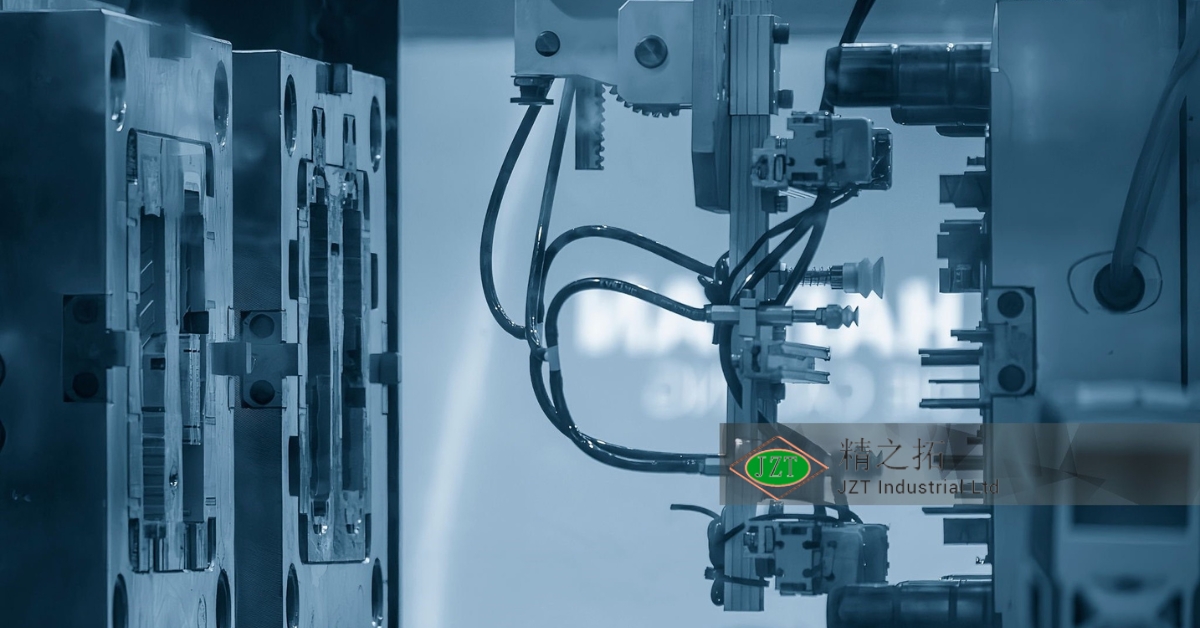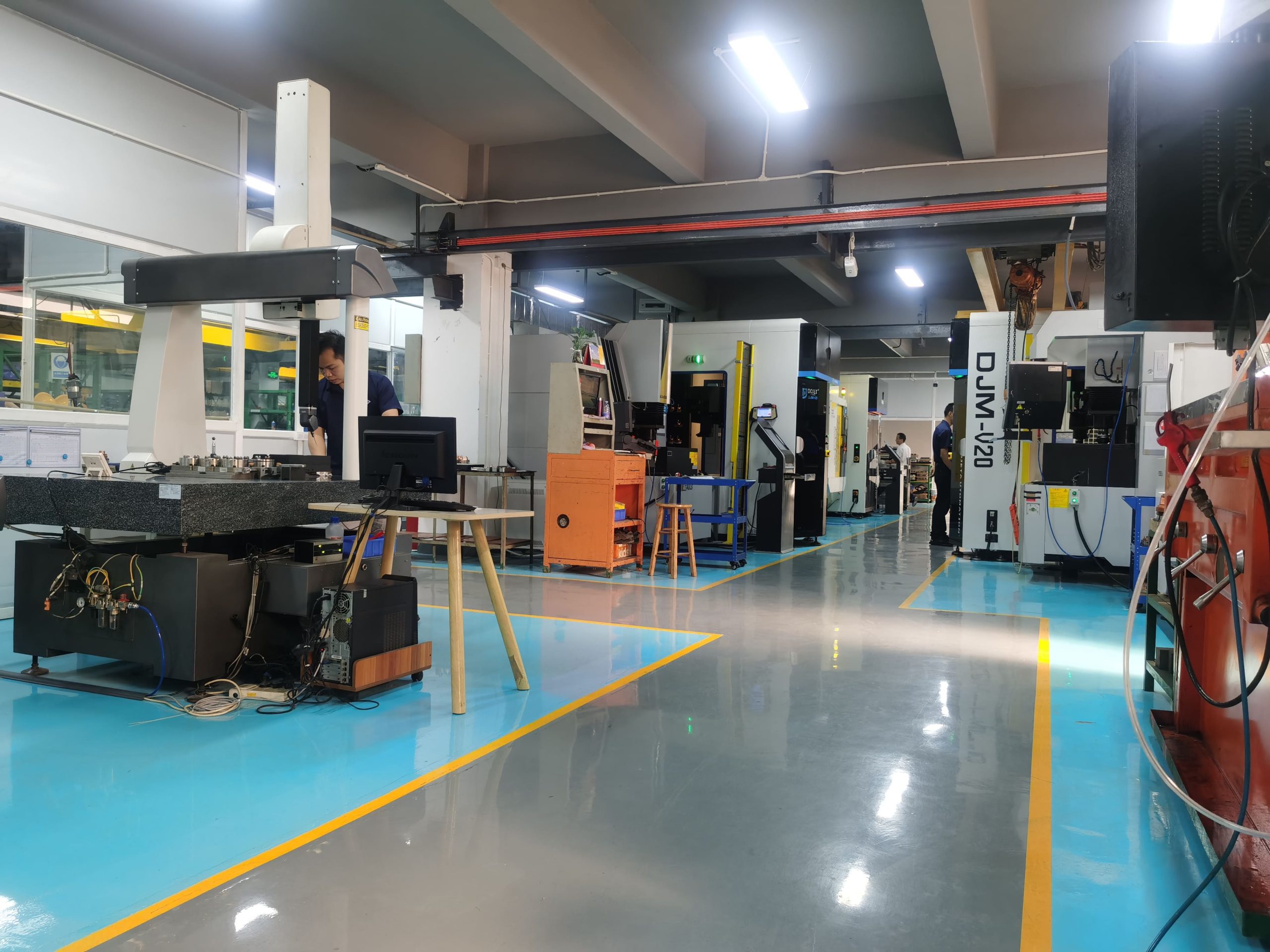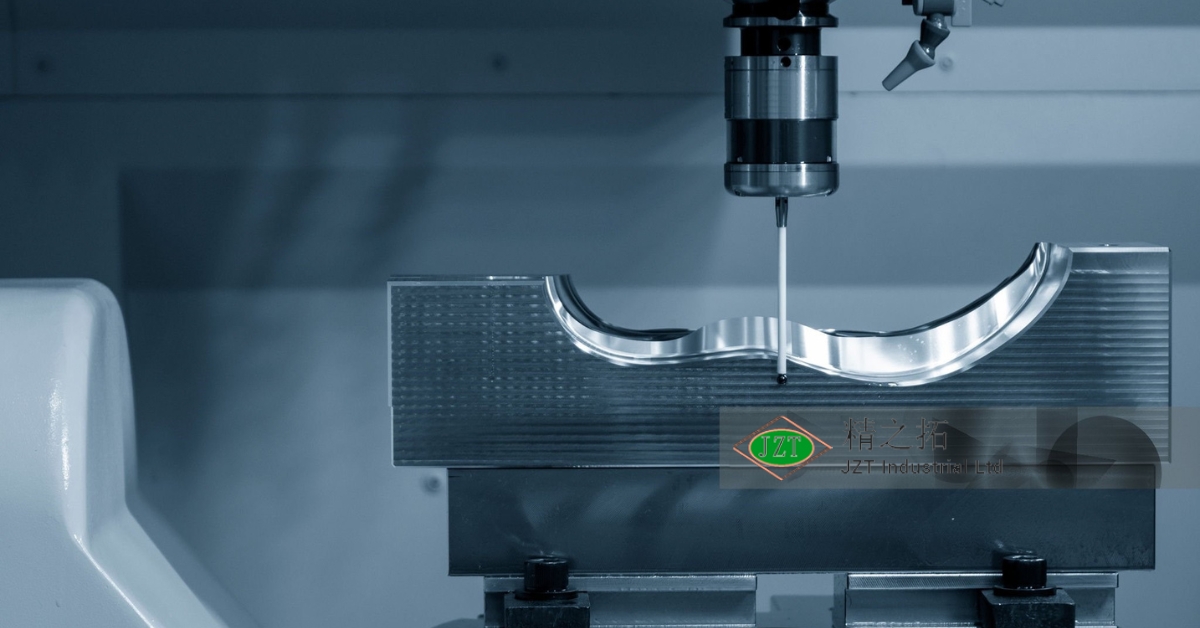導入
の開発 プラスチック射出成形金型 製造業において重要なプロセスであり、大量生産の基盤となる。 カスタムプラスチック部品 幅広い用途に使用されています。自動車部品から医療機器まで、 プラスチック射出成形金型の設計と開発 製品が効率的かつ一貫して最高の品質基準で生産されることを保証します。
しかし、なぜ 金型設計 金型はそんなに重要なのでしょうか? 適切に設計された金型は、プラスチック部品を形作るだけでなく、製造プロセスの効率、最終製品の品質、製造コスト全体を決定します。適切な設計と開発がなければ、材料の無駄、欠陥、製造の遅れなどの問題が製品の成功に大きな影響を与える可能性があります。
この包括的なガイドでは、設計と開発に関わるすべてのステップを詳しく説明します。 プラスチック射出成形金型あなたが プラスチック部品メーカー または、金型設計の複雑さを理解することに関心がある方のために、この記事では、製品要件の定義から金型のメンテナンスやトラブルシューティングまで、効果的な金型を作成するための重要な側面について説明します。
プラスチック射出成形の理解
金型設計の詳細に入る前に、金型設計の基本を明確に理解しておくことが重要です。 プラスチック射出成形 プロセス自体。 プラスチック射出成形 は、あらかじめ設計された金型に溶融プラスチックを注入して特定の部品を形成する、広く使用されている製造技術です。このプロセスにより、同一の部品を大量に高精度で製造できるため、自動車、電子機器、消費財などの業界では頼りになる方法となっています。
基本的な構成要素 プラスチック射出成形システム 含む:
- カビ: 最終的なプラスチック部品を成形する精密ツール。多くの場合、鋼鉄またはアルミニウムで作られています。金型は、キャビティとコアの 2 つの部分で構成されています。
- 射出ユニット: このシステムは、プラスチックペレットを溶かし、溶融した材料を高圧下で金型に注入します。
- クランプユニット: クランプ システムは、射出および冷却プロセス中に金型をしっかりと閉じて、圧力によって金型の半分が分離しないようにします。
プラスチック射出成形金型の種類
- シングルキャビティ金型これらの金型は、1 サイクルあたり 1 つの部品を生産するように設計されており、低~中規模の生産量や高度に特殊化された部品に最適です。
- マルチキャビティ金型大量生産向けに設計されたこれらの金型は、1 サイクルで複数の同一部品を生産し、生産時間とコストを削減します。
- ファミリーモールドこれらの金型は、1 回のサイクルでさまざまな部品を製造します。通常は、一緒に組み立てられる部品に使用されます。
の プラスチック射出成形 プロセスは非常に汎用性が高く、複雑で複雑なものを作ることができる カスタムプラスチック部品 高精度で製造されます。しかし、このプロセスの成功は金型の品質と精度に大きく依存しており、次の重要な側面につながります。プラスチック射出成形金型設計.
プラスチック射出成形における金型設計の重要性
の プラスチック射出成形金型設計 プロセスは、プラスチック部品の生産を成功させる基礎です。綿密な計画と細部への配慮がなければ、金型設計は部品の欠陥、非効率性、さらには製造の遅延によるコストの増加などの問題につながる可能性があります。金型の設計段階では、製造されるすべてのプラスチック部品が寸法、強度、外観など、意図した仕様を満たすようにする必要があります。
金型設計が最終製品の品質に与える影響
金型設計は最終製品の品質に直接影響します。 プラスチック部品メーカー金型設計の精度により、すべての部品が反り、ショートショット、ヒケなどの欠陥なく、一貫して正確に製造されます。適切に設計された金型は、部品の形状だけでなく、プラスチック材料の特性、冷却時間、金型のフローパターンも考慮して、高品質の結果を保証します。
金型設計と生産効率
効果的な金型設計は、サイクルタイムの短縮、材料の無駄の最小化、よりスムーズな生産プロセスの確保により、生産効率を大幅に向上させます。設計の悪い金型は、機械のダウンタイムの頻繁な増加、スクラップ率の上昇、サイクルタイムの延長につながり、これらはすべて生産コスト全体の増加につながります。高品質の金型に投資することで、 プラスチック射出成形金型設計製造業者はより効率的な生産工程を実現し、部品当たりのコストを削減し、収益性を向上させることができます。
金型設計における主な課題
金型設計には課題がないわけではありません。金型設計者が直面する最も一般的な問題の1つは 反り冷却が不均一な場合、成形後に部品が変形します。また、ゲートの配置が不適切であったり、ベントが不十分な場合、 ヒケ、エア トラップ、ウェルド ラインなど、これらはすべて部品の構造的完全性を損ないます。これらの課題を克服するには、部品の設計と成形プロセスの両方を深く理解する必要があります。
金型設計のコストへの影響
最適な精度と効率性を備えた金型を設計するには、多額の初期投資が必要になるかもしれませんが、長期的なメリットはコストをはるかに上回ります。適切に設計された金型は、寿命が長く、メンテナンスが少なく、欠陥の少ない高品質の部品を生産できるため、全体的な生産コストの削減に貢献します。 プラスチック部品メーカー適切な金型設計への投資により、長期にわたってスムーズな運用と高い利益率が保証されます。
ステップ1: 製品要件の定義
最初の、そしておそらく最も重要なステップは プラスチック射出成形金型の設計と開発 製品要件を定義します。この段階では、プラスチック部品が満たす必要のある正確な仕様を理解し、金型の設計を決定します。
部品仕様の理解
金型の成功は、部品の徹底的な理解にかかっています。 仕様寸法、形状、壁の厚さ、許容差など、金型の設計は非常に重要です。設計者は、金型が顧客または設計チームが定めた正確な寸法と機能要件を満たす部品を生産するようにしなければなりません。この段階での精度により、最終部品が他のコンポーネントやアセンブリとシームレスにフィットすることが保証されます。
機能要件の決定
それぞれの部品は特定の機能を果たしており、金型設計はこれを反映する必要があります。たとえば、部品が高温や機械的ストレスにさらされる場合、金型は必要な材料特性に対応し、部品がこれらの条件に耐えられるように設計する必要があります。 機能要件 設計プロセスの早い段階で行うことで、後になってコストのかかる再設計や金型の変更を避けることができます。
美的考慮
機能性に加えて、特に消費財や電子機器などの業界では、部品の外観が重要な役割を果たします。 表面仕上げ最終部品がエンドユーザーの美的期待を満たすようにするには、金型を設計する際には、形状、色、質感を考慮する必要があります。適切な金型設計により、プロジェクトの要件に応じて、滑らかで磨かれた表面やマット仕上げを実現できます。
規制およびコンプライアンス要件
自動車や医療機器などの特定の業界では、部品は厳しい規制基準を満たす必要があります。これには、特定の業界認証(ISO、FDAなど)への準拠や、安全性と性能のガイドラインへの準拠が含まれる場合があります。 コンプライアンス要件 最終製品が法的に準拠し、安全に使用できることを保証するために、金型設計の最初から考慮する必要があります。
ステップ2: 金型と部品に適した材料を選択する
材料の選択は、 プラスチック射出成形金型の設計と開発 プロセス。金型と部品の両方に適切な材料を選択すると、生産効率、部品の品質、全体的なコストに大きな影響を与える可能性があります。
適切なプラスチックの選択
部品に適したプラスチック材料の選択は、次のようないくつかの要因に依存します。 耐久性, 柔軟性, 耐薬品性、 そして 温度耐性一般的に使用される材料 プラスチック射出成形 含む:
- アブソリュート: 耐衝撃性と靭性に優れ、自動車部品に多く使用されています。
- ポリプロピレン(PP)軽量で耐薬品性に優れているため、包装や消費財に最適です。
- ポリエチレン(PE)最も用途の広いプラスチックの 1 つで、ビニール袋からボトルまであらゆるものに使用されます。
- ポリカーボネート(PC): 強度と透明性に優れ、電子部品によく使用されます。
選択されたプラスチックは、部品の機能的および美的要件に適合し、ライフサイクル全体で期待どおりに機能することを保証する必要があります。
金型材料の選択
金型自体の製造に使用される材料も同様に重要です。金型材料は、射出成形プロセスの高圧と高温に耐える必要があり、また、長期間の生産に耐える耐久性も備えていなければなりません。一般的な金型材料には次の 2 つがあります。
- 工具鋼: 耐久性と耐摩耗性に優れ、数百万個の部品を長期間生産するのに最適です。
- アルミニウム: 少量生産の場合、よりコスト効率の高いオプションですが、鋼鉄よりも早く摩耗する可能性があります。
場合によっては、製造業者は、特に研磨性プラスチックや高温プラスチックを扱う場合に、金型の性能と寿命を向上させるために、特定のコーティングや表面処理を選択することがあります。
コスト、品質、耐久性のバランス
材料の選択には、 料金, 品質、 そして 耐久性高級素材を使用すると、金型の寿命と部品の性能が向上する可能性がありますが、初期費用も増加します。一方、低コストの素材を使用すると、金型の寿命が短くなったり、製造される部品の品質が制限されたりする可能性があります。 プラスチック部品メーカー 最終製品が性能と予算の両方の要件を満たすようにするには、材料を選択する際にこれらの要素を考慮する必要があります。
ステップ3: プラスチック射出成形金型の設計
製品の要件と材料が定義されると、次のステップは プラスチック射出成形金型の設計と開発 プロセスの 1 つは、金型自体を設計することです。金型設計は非常に複雑なプロセスであり、最終部品が効率的かつ正確に、欠陥なく製造されるように細部にまで注意を払う必要があります。金型は、射出圧力に対応し、材料の流れを均一にし、部品をスムーズに取り出せる必要があります。
金型レイアウトの設計
金型レイアウトとは、キャビティ、コア、その他のコンポーネントの配置方法を含む、金型の全体的な構造を指します。レイアウトにより、プラスチック材料が金型全体に均等に流れ、空気ポケットや空隙を残さずに各キャビティを満たすことが保証されます。
- キャビティとコアの設計: キャビティは部品の外側の形状を形成し、コアは内側の構造を形成します。これら2つのコンポーネントは、プラスチックが冷却された後に部品を簡単に取り出せるように、完全にフィットするように設計する必要があります。設計者は、金型内のキャビティの数も考慮する必要があります。 マルチキャビティ金型 1サイクルあたり複数の部品を生産できるため、生産効率が向上します。
- モールドベースとインサート: 金型ベースはキャビティとコアを所定の位置に保持し、射出圧力に耐えられるように設計する必要があります。インサートを使用すると、金型の一部を変更して部品の異なるバージョンを作成したり、まったく新しい金型を作成せずに摩耗したコンポーネントを交換したりすることができます。
パーティングライン設計
の パーティングライン 金型の 2 つの半分が結合する場所です。この領域に欠陥があると、最終部品に目に見える継ぎ目やバリが生じる可能性があるため、パーティング ラインを慎重に設計することが重要です。設計者は、部品の形状とパーティング ラインの位置を考慮して、視覚的な欠陥を最小限に抑え、部品を簡単に取り出せるようにする必要があります。
エジェクタピンの設計
プラスチック部品が冷えて固まったら、金型から取り出す必要があります。 エジェクタピン エジェクタピンは金型キャビティから部品を押し出すために使用され、部品を損傷したり目に見える跡を残したりしないように、その配置を慎重に検討する必要があります。また、エジェクタピンの設計では、部品を迅速かつ効率的に取り外せるようにして、サイクル時間を短縮する必要があります。
ゲートの位置
の ゲート 溶融プラスチックが金型キャビティに注入される入口です。ゲートの位置とサイズは、材料の流れを均一にし、ウェルドラインやエアトラップなどの欠陥を防ぐために重要です。部品の設計に応じて、次のようないくつかの種類のゲートを使用できます。 エッジゲート, 潜水艦ゲート、 そして ホットランナーシステムゲートのタイプと位置の選択は、部品のサイズ、使用するプラスチックの種類、必要な表面仕上げなどの要因によって異なります。
ランナーとスプルーシステム
ゲートに加えて、金型設計には以下を含める必要があります。 ランナーとスプルーシステム 溶融プラスチックを射出ユニットから金型キャビティに導く装置です。ランナーはプラスチックを運ぶチャネルで、スプルーはランナーを射出ポイントに接続するメイン チャネルです。これらのシステムは、材料の無駄を最小限に抑え、プラスチックがキャビティに均一かつ効率的に到達できるように設計する必要があります。
ベント
射出プロセス中は、部品内にエアトラップやボイドが形成されるのを防ぐために、金型キャビティ内の空気を逃がす必要があります。 通気口 溶融プラスチックが漏れ出ることなく、空気を逃がすための小さなチャネルです。適切な通気は、高品質の仕上がりの部品を製造し、閉じ込められた空気によって生じる焦げ跡などの欠陥を回避するために不可欠です。
ドラフト角度
ドラフト角度 金型キャビティの垂直面にわずかなテーパーを付けて、部品を簡単に取り出せるようにします。抜き勾配がないと、部品が金型にくっついて、部品と金型の両方が損傷する可能性があります。抜き勾配の大きさは部品の材質と形状によって異なりますが、1 ~ 2 度の小さな角度でも、取り出し効率が大幅に向上します。
ステップ4: 金型フロー解析とシミュレーション
金型を製造する前に、 モールドフロー解析 射出成形中に溶融プラスチックが金型内でどのように動作するかをシミュレートします。このステップは、実際の製造プロセスで問題が発生する前に潜在的な問題を特定し、金型設計を調整して時間、費用、材料を節約するために重要です。
モールドフロー解析とは何ですか?
モールドフロー解析 は、溶融プラスチックが金型キャビティにどのように充填されるかを予測するために使用されるソフトウェアベースのシミュレーションツールです。これは、材料がどのように流れるか、潜在的な欠陥が発生する可能性のある場所、および均一な充填を確実にするために設計を最適化する方法を理解するのに役立ちます。この分析を使用することで、金型設計者は次のような問題を防ぐことができます。 反り, ヒケ、 そして ショートショット.
生産前のシミュレーションの重要性
金型を製造する前にシミュレーションを実行すると、最終部品の欠陥リスクを大幅に削減できます。シミュレーションを行わないと、部品の特定の領域が適切に充填されないことや、冷却時間によって収縮が不均一になることに設計者が気付かない場合があります。これらの問題を早期に特定することで、設計者はゲート位置や冷却チャネルを調整するなど、金型設計を変更して、高品質の結果を確保できます。
金型流動解析における重要な要素
金型フローシミュレーション中に、いくつかの重要な要素が分析されます。
- 充填時間: シミュレーションでは、溶融プラスチックが金型キャビティを満たすのにかかる時間を計算します。充填時間が遅すぎると、プラスチックが急速に冷却され、金型全体を充填できず、欠陥が発生する可能性があります。充填時間が速すぎると、過剰な圧力が発生し、フラッシュやその他の欠陥が発生する可能性があります。
- プレッシャー: 解析により、プラスチックを金型に押し込むために必要な圧力が決定されます。適切な圧力を確保することで、ヒケなどの欠陥の原因となる過剰充填などの問題を回避できます。
- 冷却時間: 冷却は成形プロセスにおける重要な段階であり、金型フロー解析は部品がどれだけ速く冷却されるかを予測するのに役立ちます。冷却が不均一だと反りや収縮が発生する可能性があるため、シミュレーションは設計者が冷却チャネルの配置を最適化するのに役立ちます。
金型流動解析で特定される一般的な問題
モールドフロー解析中に特定できる最も一般的な問題には、次のようなものがあります。
- ヒケ: プラスチックが不均一に収縮し、部品の表面にへこみが生じている部分。
- 溶接ライン: 溶融プラスチックの 2 つのフロー フロントが合流する場所に形成される線。部品を弱める可能性があります。
- エアトラップ: 閉じ込められた空気のポケットにより、部品に空隙や欠陥が発生する可能性があります。
- フローライン: プラスチックの不均一な流れによって部品の表面に縞模様が見える。
金型が製造される前にシミュレーションを実行することで、設計者はこれらの欠陥を防ぎ、金型の全体的な品質を向上させる変更を加えることができます。
ステップ5: プロトタイプの作成とテスト
金型設計が完成し、シミュレーションで検証されたら、次のステップは プラスチック射出成形金型の設計と開発 プロトタイプを作成し、テストを開始することです。プロトタイプ作成は、金型の機能性をテストし、必要な仕様をすべて満たす部品が製造されるように調整を行う重要な段階です。
金型の試作品の作成
の プロトタイプ 金型は、次のようないくつかの方法で作成できます。 3Dプリント または CNC加工これらのプロトタイプは通常、完全な生産には使用されませんが、最終的な金型が作られる前に設計をテストして改良するために不可欠です。3D プリントは、視覚テストやフィット テスト用の迅速で低コストのプロトタイプを作成するためによく使用されますが、CNC 加工を使用すると、最終的な金型に非常によく似た、より正確で機能的なプロトタイプを作成できます。
初期実行による金型のテスト
プロトタイプ金型が作成された後に、実際の生産条件下での金型の性能を評価するための初期テストが行われます。この段階では、限られた数の部品が製造され、各部品の欠陥、寸法精度、全体的な品質が慎重に検査されます。
プロトタイプの機能性を評価する
試作品の部品はテストされ、 フィット, 強さ、 そして 耐久性 最終製品の機能要件を満たしていることを確認するためです。たとえば、部品が高応力環境での使用を意図している場合、機械的強度と衝撃または摩耗に対する耐性がテストされます。テスト中に特定された問題は、本格的な生産が始まる前に金型設計を調整することで対処できます。
テスト結果に基づいて調整を行う
テスト段階の結果に基づいて、設計者は金型設計の調整が必要になる場合があります。これには、 ゲートの位置、変更する ランナーシステム、または調整する 冷却チャネル 部品の品質を向上させ、サイクル タイムを短縮します。このステップの目的は、大量生産時に金型が最適に機能するように微調整することです。
ラピッドプロトタイピングの役割
ラピッドプロトタイピング 金型開発プロセスのスピードアップには、3Dプリントや SLA(ステレオリソグラフィー)デザイナーは、高価で時間のかかるツールを必要とせずに、プロトタイプをすばやく作成してテストできます。これにより、複数の設計反復を短時間でテストして改良できるため、全体的な開発期間が大幅に短縮されます。
ステップ6: 金型の製造
金型設計が完全にテストされ、検証されたら、高精度の機械加工プロセスを使用して最終的な金型が製造されます。この段階は、金型が耐久性と精度を備え、ライフサイクル全体にわたって高品質の部品を製造できることを保証するために重要です。
金型製作のためのCNC加工
CNC(コンピュータ数値制御)加工 金型を製造するために使用される主要な方法の 1 つです。このプロセスでは、コンピューター制御の機械を使用して、金型のキャビティとコアを必要な仕様に合わせて正確に切断します。 CNC加工 非常に厳しい許容誤差と高い精度を実現し、高品質の製品を生産するために不可欠です。 プラスチック射出成形金型.
EDM(放電加工)
複雑な形状や精巧なディテールを必要とする金型の場合、 EDM(放電加工) よく使用されます。 EDM は電気火花を使用して金属を侵食し、従来の切削方法では実現が困難または不可能な非常に詳細な金型機能を作成できます。 このプロセスは、複雑な内部機能や細かいディテールを持つ金型によく使用されます。
金型製造における品質管理
金型製造プロセスでは、金型が必要な仕様を満たしていることを確認するために品質管理が不可欠です。 座標測定機 (CMM) 金型キャビティとコアの寸法を測定し、設計と正確に一致することを確認するためによく使用されます。製造プロセス全体にわたって定期的に検査を実行することで、金型が完成する前に問題を特定して修正することができます。
研磨および表面処理
金型が機械加工されると、追加の 研磨 そして 表面処理 性能を向上させるために研磨は滑らかな表面仕上げに役立ち、特に高光沢または磨き仕上げが必要な部品には重要です。場合によっては、次のような表面処理が効果的です。 硬化 または コーティング 金型の耐久性と耐摩耗性を高めるために適用されます。
ステップ7: 金型の組み立てとテスト
金型が製造された後、最終工程では プラスチック射出成形金型の設計と開発 プロセスは、金型を組み立ててテストすることです。このステップでは、金型のすべてのコンポーネントが意図したとおりに連携して動作し、金型が生産の準備ができていることを確認します。
金型部品の組み立て
金型は、キャビティ、コア、エジェクタ システム、およびその他のコンポーネントを組み合わせて組み立てられます。射出成形中に金型がスムーズに動作し、正しい寸法の部品が製造されるようにするには、この組み立てを極めて正確に行う必要があります。
試運転の実施
金型が組み立てられると、 試運転 実際の生産条件でその性能をテストするために、試運転が行われます。この試運転では、少量の部品が製造され、金型に欠陥の兆候がないか注意深く監視されます。 フラッシュ, ショートショット、 または パーティングラインの不一致試運転は、金型を量産に使用する前に対処する必要がある問題を特定するのに役立ちます。
潜在的な問題の特定
試運転中に、充填の不均一、取り出し不良、冷却の問題などの潜在的な問題が明らかになる場合があります。これらの問題は、冷却チャネルの位置を変更したり、ゲートの設計を変更したりするなど、金型に小さな調整を加えることで解決できることがよくあります。試運転段階でこれらの問題を特定して対処することで、本格的な生産中にコストのかかる遅延や欠陥を防ぐことができます。
最終調整を行う
試運転後、金型がすべての生産基準を満たしていることを確認するために、金型に必要な調整が行われます。これらの調整が完了すると、金型は量産に使用できる状態になります。
ステップ8: 生産と継続的なメンテナンス
金型が完全に組み立てられ、テストされたので、本格的な生産の準備が整いました。しかし、生産が始まっても作業は終わりません。金型が効率的に動作し続け、寿命を通じて高品質の部品を生産し続けるためには、継続的なメンテナンスが不可欠です。
金型を使った大量生産
大量生産では、金型を使用して大量の カスタムプラスチック部品生産工程では、 サイクルタイム, 射出圧力、 そして 冷却速度 各部品が必要な仕様を満たしていることを確認します。適切に設計された金型により、欠陥を最小限に抑えながら迅速かつ効率的に生産できます。
定期的な金型メンテナンス
金型は繰り返し使用することで時間の経過とともに摩耗します。金型の寿命を延ばすには、 定期メンテナンス は不可欠です。これには、金型を定期的に洗浄し、摩耗や損傷の兆候がないか検査し、部品の欠陥を防ぐために表面を磨くことが含まれます。定期的なメンテナンスは、部品の固着や表面仕上げの不良などの問題を防ぎ、金型をできるだけ長く良好な状態に保つのに役立ちます。
カビの修復
金型が損傷したり、著しく摩耗したりした場合は、修理が必要になる場合があります。修理には、摩耗した部品の交換、損傷した部分の再加工、または金型の機能を回復するための表面処理の適用が含まれます。 プラスチック部品メーカータイムリーな修理に投資することで、コストのかかる生産停止を回避し、部品が品質基準を満たし続けることを保証します。
金型を廃棄する時期
最終的には、すべての金型は耐用年数の終わりを迎えます。金型を廃止する必要がある兆候としては、メンテナンス コストの増加、頻繁な修理、部品の品質の低下などがあります。このような状況では、古い金型を修理し続けるよりも、新しい金型を作成した方がコスト効率が良い場合があります。金型を廃止する時期を理解することは、生産コストを管理し、製造プロセスの効率を維持する上で重要な部分です。
プラスチック射出成形金型設計における一般的な課題
の進歩にもかかわらず プラスチック射出成形金型の設計と開発ただし、特定の課題は依然として存在します。これらの課題を理解し、その対処方法を知ることは、金型設計プロセスを成功させる上で非常に重要です。
反りや縮みを防ぐ
ワーピング そして 収縮 冷却中によく発生する問題です。反りは不均一な冷却によって発生し、部品を歪ませる可能性があります。一方、収縮はプラスチックが冷却時に収縮することで発生し、寸法の不正確さにつながります。冷却チャネルを適切に設計し、冷却速度を慎重に制御することで、これらの問題を軽減できます。
複雑な形状の扱い
金型付き 複雑な形状 特に複雑なディテールやアンダーカットが必要な部品の場合、設計や製造が難しくなることがあります。このような場合には、 ED または、望ましい結果を得るには、複数の部品からなる金型が必要になる場合があります。
物質フローの問題
材料の流れが適切に制御されていない場合、次のような欠陥が発生します。 ショートショット (不完全な部分)または エアトラップ が発生する可能性があります。ゲートの配置、ランナー システム、ベントを最適化すると、材料の流れが均一になり、これらの問題を防ぐことができます。
厳しい許容範囲の維持
航空宇宙や医療機器などの業界では、 厳しい許容範囲 部品が正確な仕様を満たすようにするためには、精度が重要です。厳しい公差を達成するには、金型設計プロセス中に細部にまで注意を払い、高精度の加工技術を使用する必要があります。
金型設計における技術的進歩
技術の進歩により、効率と精度が大幅に向上しました。 プラスチック射出成形金型設計最新のツールと技術を活用することで、メーカーはより優れた金型をより迅速かつ低コストで作成できます。
金型設計用CADソフトウェア
CAD(コンピュータ支援設計) ソフトウェアは、設計者が金型の非常に詳細なデジタル モデルを作成できるようにすることで、金型設計プロセスに革命をもたらしました。これらのモデルはリアルタイムで分析、テスト、変更できるため、物理的なプロトタイプの必要性が減り、設計プロセスがスピードアップします。 CAD/CAM 統合により、設計段階と製造段階の間で直接通信が可能になり、最終的な金型が設計仕様に正確に一致することが保証されます。
金型試作のための3Dプリント
3Dプリント 貴重なツールとして登場しました ラピッドプロトタイピング 金型設計において、金型や部品の物理モデルを素早く作成することで、設計者は本格的な生産に移る前に設計をテストし、改良することができます。これにより、エラーのリスクが軽減され、設計の反復作業が迅速化されます。
スマートモールドとIoTの統合
の出現 スマートモールド そして IoT(モノのインターネット) テクノロジーにより、メーカーは金型のパフォーマンスをリアルタイムで監視できるようになりました。金型に埋め込まれたセンサーは、温度、圧力、サイクル時間に関するデータを収集できるため、メーカーは生産を最適化し、欠陥を減らすことができます。
金型設計における AI と機械学習
AI(人工知能) そして 機械学習 大規模なデータセットを分析し、潜在的な設計上の欠陥を予測することで、AI が金型設計に役立ち始めています。AI を使用して設計プロセスを最適化することで、メーカーはより効率的な金型を作成し、欠陥の少ない高品質の部品を生産できるようになります。
結論
の設計と開発 プラスチック射出成形金型 金型設計は、各段階で細部にまで注意を払う必要がある、複雑で複数のステップから成るプロセスです。製品要件の定義や材料の選択から、金型レイアウトの設計やシミュレーションの実行まで、金型設計プロセス中に下されるすべての決定は、最終製品の品質と効率に直接影響します。
このガイドに記載されている手順に従うことで、 プラスチック部品メーカー 金型が最高水準で設計・開発され、より効率的な生産、コストの削減、高品質が実現します。 カスタムプラスチック部品技術が進歩するにつれて、金型設計プロセスはより効率的かつ正確になり、製造業の競争の激しい世界で製造業者に革新と成功のさらなる機会を提供します。
よくある質問
金型設計において最も重要な要素は何ですか?
最も重要な要素は 金型設計 最も重要なのは精度です。適切に設計された金型により、部品が一貫した寸法、強度、品質で製造され、欠陥が最小限に抑えられ、生産効率が最大化されます。
プラスチック射出成形金型の設計と開発にはどれくらいの時間がかかりますか?
設計と開発に必要な時間は プラスチック射出成形金型 部品の複雑さによって異なりますが、通常は数週間から数か月かかります。材料の選択、部品の形状、テストの必要性などの要因はすべてタイムラインに影響を与える可能性があります。
金型に適した材料を選択するにはどうすればよいでしょうか?
金型に適した材料の選択は、生産量、部品の材料、予算などの要因によって異なります。 工具鋼 耐久性があるため、長期生産に最適です。 アルミニウム 少量生産の場合、よりコスト効率の高いオプションです。
プラスチック射出成形金型の一般的な寿命はどれくらいですか?
寿命は プラスチック射出成形金型 使用される材料、金型の複雑さ、および金型のメンテナンス状態によって異なります。スチール製の金型は、その寿命を通じて何百万もの部品を生産できますが、アルミニウム製の金型は寿命が短いかもしれませんが、少量生産の場合はコスト効率が高くなります。
既存の金型を変更して新しい部品を製造することはできますか?
場合によっては、既存の金型を変更して新しい部品を製造できますが、これは必要な変更の範囲によって異なります。新しい機能の追加やゲート位置の変更などの小さな調整は多くの場合可能ですが、大幅な設計変更には新しい金型の作成が必要になる場合があります。
金型フロー解析によって生産時の欠陥をどのようにして防ぐことができますか?
モールドフロー解析 潜在的な問題を特定するのに役立ちます ヒケ, 溶接ライン、 そして エアトラップ 金型が製造される前に、溶融プラスチックが金型内を流れる様子をシミュレーションすることで、設計者は金型の設計を調整し、こうした欠陥を防ぎ、材料の流れを均一にすることができます。
金型設計で避けるべきよくある間違いは何ですか?
金型設計でよくある間違いには、 ゲート配置、不十分 通気、そして考慮していない 冷却速度これらのミスは、反り、収縮、部品の不完全などの欠陥につながる可能性があります。細部に注意を払い、金型フロー解析を使用すると、これらの問題を回避できます。

